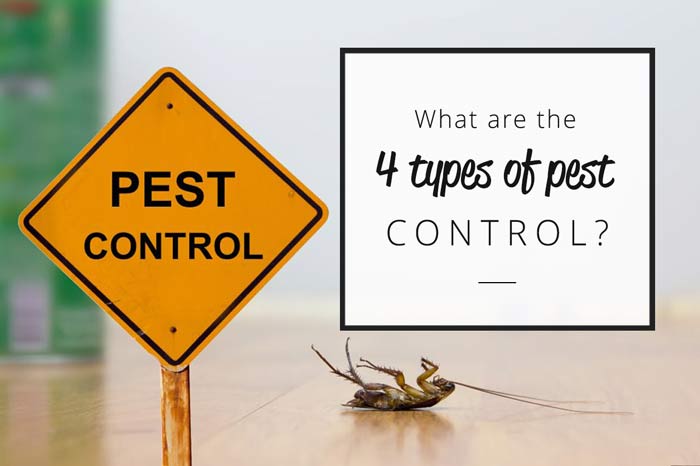6 Easy Facts About Pest Control Shown
6 Easy Facts About Pest Control Shown
Blog Article
10 Simple Techniques For Pest Control
Table of ContentsNot known Facts About Pest ControlExamine This Report about Pest ControlHow Pest Control can Save You Time, Stress, and Money.The Basic Principles Of Pest Control See This Report about Pest Control
Limitations of Chemical Administration Have the ability to assess insect problems, identify if administration is necessary, and make appropriate referrals making use of IPM methods. Be acquainted with various approaches of bug monitoring - their advantages and restrictions. Comprehend the value of beneficial pests. It is not possibleor even desirableto rid gardens of all parasites.This phase goes over (IPM), a method that uses expertise concerning bugs and their, practices, nonchemical approaches, and pesticides to take care of insect issues. Added information regarding IPM for certain plants is consisted of in chapters that focus on those plants. Nonchemical bug control steps are emphasized in chapter 17, "Organic Gardening." Taking care of birds and creatures is covered in phase 20, "Wildlife." Managing in the yard and yard is covered in phase 6, "Weeds." Bugs in a garden or landscape may include bugs and termites, weeds,, creatures, and birds.
Many individuals rush to draw, hoe, or spray every weed they see. Bugs and weeds, however, play a function in the. After planting a garden or establishing a yard, the natural process of plant sequence starts to restore and nonnative plants. A weed growing in a lawn stands for the first phase in a series of occasions that, if allowed to proceed, can eventually cause a woodland.
What we call "pests" are component of a natural system at work. Just people think about certain types insects when they happen where they are not desired.
The Ultimate Guide To Pest Control
Insects vulnerable to a chemical were promptly killed, leaving resistant ones to breed and increase. It ended up being clear that pesticides alone would not fix all parasite troubles. Instead, overuse of chemicals triggered the development of resistant pests. Scientists began to create a new technique to pest control. This new technique was called integrated parasite monitoring (IPM).
An IPM strategy permits some level of parasites in the environment. Bugs are a lot less likely to endure a program that uses lots of various techniques of reducing their populaces. Integrated parasite monitoring was very first suggested by entomologists because bugs were the initial team of pests to show challenging to handle with chemicals alone.
bug and host precisely. and think about financial or visual injury. A limit is the factor at which activity must be taken. a therapy technique using mechanical, cultural, organic, or chemical controls, or a combination of these strategies. success of treatments. IPM has actually expanded beyond pests to management of all pest populations: weeds, condition organisms, anchor and mammals.
The Buzz on Pest Control
Monitoring rather than elimination of parasites is the goal. An IPM plan begins with a cautious assessment of each pest infestation.
Clover expanding in a grass may be considered as an unwanted weed, however as a bean it is manufacturing nitrogen for the soil and the blossoms are giving nectar to honey and other. Tolerance for some weeds may belong to an IPM strategy. might be consuming the leaves of a plant, but when they are recognized as the larvae of Eastern tiger swallowtail butterflies, their damage may be endured so we can appreciate the stunning butterfly.

The 2nd most essential device in parasite administration is very early intervention. Responding to troubles quickly, before they have time to multiply, calls for a much less significant treatment.
A Biased View of Pest Control
Numerous risk-free, useful, nonchemical techniques of plant protection and parasite monitoring may lower or eliminate the requirement to spray. Other approaches are most beneficial when made use of with chemicals. To execute monitoring techniques appropriately and to reduce losses, garden enthusiasts ought to be aware of the types of bugs that attack plants and understand pest biology.

Performing a soil test and applying only the recommended quantity of plant food and lime maximizes the benefit to the plant while minimizing troubles associated with excessive use fertilizer - Pest Control. Treatment the soil with numerous inches of compost shields the plant in several ways: reducing soil water loss to evaporation, decreasing weed competition, offering nutrients, and developing an ideal environment for earthworms and microbes that keep the soil loosened for roots and break down organic material to release nutrients
If mulch touches the trunk, it can develop a way for voles, microorganisms, and fungis to strike the plant. Do not make Check This Out use of manure or compost that has not extensively disintegrated as a leading dressing since it can urge unwanted parasites. Research study suggests that tilling the soil is destructive to soil structure.
Some Known Details About Pest Control
If tilling is considered needed, take into consideration doing it in the autumn when the life cycles of numerous pests brings them near the surface area. At the surface area, pests end up being subjected to the weather condition along with birds and other natural enemies. Loss tilling can additionally ruin pests in plant residues. Use disease-free and insect-free certified seeds and plants if readily available.
Report this page